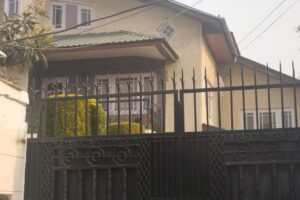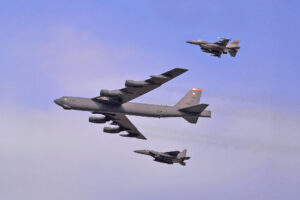
[SINGAPORE] Economists are split on whether Singapore’s central bank will further ease monetary policy at its next meeting on Jul 30, after the latest core inflation data came in lower than expected.
June’s core inflation, which excludes accommodation and private transport, remained unchanged at 0.6 per cent year on year, according to data from the Singapore Department of Statistics (SingStat) on Wednesday (Jul 23).
The figure was lower than private-sector economists’ median forecast of 0.7 per cent, according to a Bloomberg poll.
Headline inflation also held steady at 0.8 per cent, but was lower than the survey’s median estimate of 0.9 per cent.
The subdued reading prompted some private-sector economists to lower their 2025 full-year core inflation estimates.
UOB now expects full-year core inflation to average 0.6 per cent in 2025, from 0.8 previously, and for headline inflation to average 0.9 per cent, from 1 per cent previously.
BT in your inbox
Start and end each day with the latest news stories and analyses delivered straight to your inbox.
In 2026, it expects full-year core inflation to average 1.1 per cent, from 1.3 per cent before, and headline inflation to average 1.6 per cent, from 1.7 per cent.
Meanwhile, RHB slashed its 2025 full-year core inflation forecast to 1.2 per cent, from 1.6 per cent before, and for headline inflation to be 0.9 per cent, from 1.1 per cent previously.
The revised figures are in line with the official full-year core and headline inflation forecast range of 0.5 to 1.5 per cent respectively.
Bank of America (BOA) sees core inflation averaging 0.6 per cent in 2025 and 1.2 per cent in 2026, 1 percentage point lower than both previous estimates respectively.
Split expectations
Private-sector economists, however, were divided on whether the Monetary Authority of Singapore (MAS) will ease monetary policy settings further at the next meeting scheduled on Jul 30.
The central bank had last eased monetary policy settings in January, after having held them steady for more than two years since the last tightening move in October 2022.
Economists widely expect MAS to ease policy settings once more this year, but are mixed on the timing of the next easing move.
“In our view, further MAS easing, via adjustment to a zero per cent S$NEER (Singapore dollar nominal effective exchange rate), is likely a matter of when, not if,” said UOB associate economist Jester Koh, whose base case is for the central bank to ease settings in the subsequent meeting in October.
He noted, however, that June’s subdued consumer price index data raises the possibility of easing during the upcoming meeting.
Meanwhile, OCBC chief economist Selena Ling believes the lower-than-expected inflation data for June and MAS’ inflation outlook “is not excessively dovish when interpreted in the context of the anticipated tariff risks on domestic inflation”.
In its statement, MAS said that it expects “the uncertainties to inflation (to) remain high amid the increased risks in the external environment”.
Ling said: “We still lean towards the view that there is no rush to ease monetary policy again at the next scheduled monetary policy meeting on Jul 30. While the core inflation risks appear more subdued in H1 2025 than earlier anticipated, the lower base in H2 2024 still implies core inflation may print higher than the 0.6 per cent year on year seen in the first half of the year.”
Possible easing
Maybank economists Chua Hak Bin and Brian Lee also expect MAS to stand pat in July, but believe that the central bank will hold steady for the rest of the year. “This is in view of the resilient economic outlook and benign, but stabilising core inflation,” they noted.
In contrast, RHB analysts Barnabas Gan and Laalitha Raveenthar believe that MAS could widen the S$NEER policy band to 3 per cent, from 2 per cent, at the July meeting. A flattening of the policy band slope also “remains possible”, given the lingering global uncertainties in the second half of next year, they added.
“While recent data points to some resilience in the economy, underlying vulnerabilities persist. Renewed US-China trade tensions, a potential global slowdown, and escalating geopolitical risks could significantly impact Singapore’s export-oriented sectors,” the RHB analysts pointed out.
“Although both headline and core inflation remain contained, mounting external uncertainties have shifted the balance of risks toward the need to prioritise growth support,” they added. “MAS may have room for an accommodative stance in July to support growth amid subdued inflation pressures.”
BOA economists Kai Wei Ang and Rahul Bajoria expect MAS to take a “pre-emptive stance” by flattening the S$NEER policy band slope in July, rather than waiting till October. This is given that the core inflation outlook looks “seemingly more benign” since the April meeting.
Key CPI categories
On a month-on-month basis, both core and headline inflation fell by 0.1 per cent.
In June, the majority of consumer price index (CPI) categories experienced easing prices, except for private transport as well as retail and other goods.
Electricity and gas inflation fell further to 3.9 per cent, from a fall of 3.7 per cent in May, due to a larger decline in electricity prices.
Food inflation eased slightly to 1 per cent, from 1.1 per cent previously, as the prices of food services and non-cooked food rose at a slower pace.
Meanwhile, accommodation prices dipped to 1 per cent, from 1.1 per cent earlier, due to a smaller increase in housing rents.
Services inflation dropped to 0.7 per cent, from 1.1 per cent, due to a steeper decline in holiday expenses, airfares and the cost of information and communication services.
In contrast, retail and other goods prices remained flat compared to a year ago, picking up pace from a fall of 1 per cent in the previous month.
Private transport prices also accelerated to 2 per cent, from 1.1 per cent in May, due to a steeper rise in car prices and a slower pace of decline in petrol prices.
Separately, data from SingStat also showed that headline CPI for general households rose by 0.9 per cent on the year in the first half of 2025, slower than the 1.8 per cent increase recorded in the second half of 2024.





